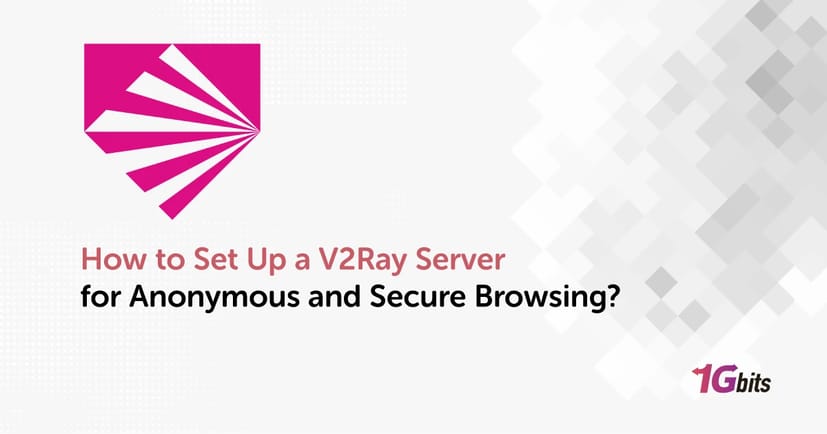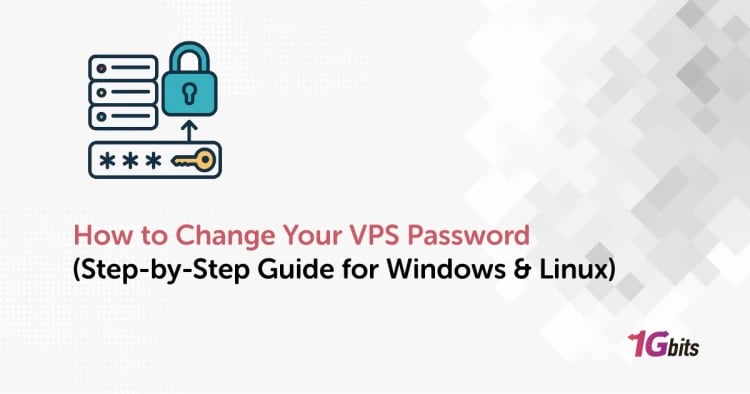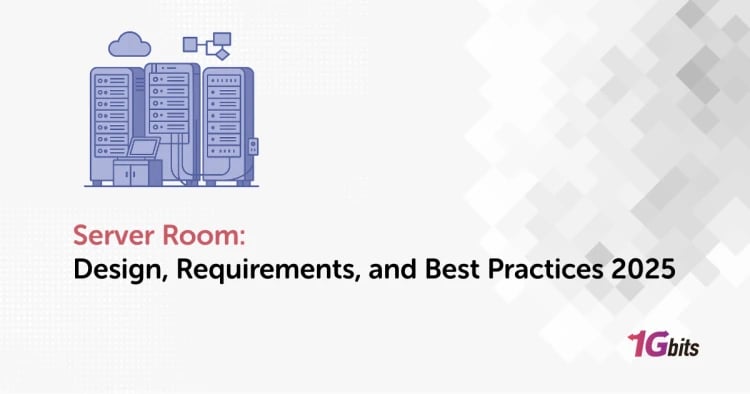With increasing concerns over online privacy, surveillance, and geo-restrictions, many users are turning to tools like V2Ray for more control and anonymity. In this detailed V2Ray tutorial, we’ll walk you through how to set up V2Ray server, explore its core benefits, compare it with other proxy technologies, and ensure you leave with a complete v2ray install guide.
Want a simpler overview first? Check out our Guide to V2Ray Server to learn how V2Ray works in general use cases.
Introduction to V2Ray
What is V2Ray?
V2Ray is an open-source platform for building secure internet connections using advanced proxy protocols. It enables users to bypass censorship, hide their IP addresses, and encrypt internet traffic, offering v2ray anonymous browsing capabilities. At its core, it supports protocols like VMess, VLess, Shadowsocks, and more.
Why Choose V2Ray for Anonymous Browsing?
Unlike basic VPNs or older proxy tools, V2Ray:
-
Supports obfuscation techniques to disguise your traffic
-
Offers granular routing control
-
Is modular and extremely customizable
-
Allows both client-side and server-side configuration for maximum privacy
This makes it one of the most powerful tools for achieving v2ray anonymous browsing, especially in restrictive environments.
Overview of V2Ray Features and Architecture
V2Ray’s architecture is made up of:
-
Inbounds: Handle incoming traffic (like VMess or SOCKS)
-
Outbounds: Define how traffic is sent out (e.g., to the open internet)
-
Routing rules: Determine which outbound route to use
-
Stream settings: Include TLS, WebSocket, and HTTP/2 options
It operates in a client-server model, where the server handles the actual proxy routing and the client connects to it with specific configurations.
V2Ray vs Shadowsocks and VPNs
|
Feature |
V2Ray |
Shadowsocks |
VPN |
|
Protocol Support |
VMess, VLess, SOCKS5, etc. |
SOCKS5 only |
Proprietary (e.g., OpenVPN) |
|
Obfuscation |
Advanced (TLS/WebSocket) |
Basic (simple obfuscation) |
Varies by provider |
|
Configurability |
Very high |
Moderate |
Low to moderate |
|
Server Hosting Required |
Yes |
Yes |
No (often managed) |
|
Anonymous Browsing |
Yes |
Yes |
Depends on provider |
Looking to skip server setup? V2Ray Server for instant access.
Prerequisites Before Setup
Before diving into how to set up V2Ray server, ensure the following requirements are met:
-
Server OS: Ubuntu 20.04 (most commonly supported)
-
Root or sudo access to the server
-
Basic Linux command-line knowledge
-
A domain name (strongly recommended for TLS/HTTPS)
-
Tools: SSH client (like PuTTY or Terminal), Text Editor (nano or vim)
This guide assumes you're using Ubuntu. If not, the steps are very similar across most Debian-based distributions.
Step-by-Step Guide to Setting Up a V2Ray Server
This guide how to set up V2Ray server follows a simplified and updated method to help you configure a secure server using VMess protocol, reverse proxy with Nginx, and TLS encryption for anonymity.
1. Server Preparation
Update packages and install essentials:
sudo apt update && sudo apt upgrade -y
sudo apt install curl unzip sudo socat -y
Set up UFW (Uncomplicated Firewall):
sudo ufw allow ssh
sudo ufw allow 80,443/tcp
sudo ufw enable
This allows web and SSH traffic while keeping other ports secure.
2. Installing V2Ray Core
The easiest way is using the official installation script from the V2Ray GitHub repo:
bash <(curl -L -s https://install.direct/go.sh)
This script installs the v2ray-core binaries and sets it up as a systemd service.
Verify installation:
v2ray -version
3. V2Ray Server Configuration
Open and edit the configuration file:
sudo nano /usr/local/etc/v2ray/config.json
Replace its content with the following v2ray server configuration (make sure to generate your own UUID using uuidgen):
{
"inbounds": [{
"port": 10086,
"protocol": "vmess",
"settings": {
"clients": [{
"id": "your-uuid-here",
"alterId": 0
}]
},
"streamSettings": {
"network": "ws",
"wsSettings": {
"path": "/ray"
}
}
}],
"outbounds": [{
"protocol": "freedom",
"settings": {}
}]
}
Restart V2Ray for the changes to take effect:
sudo systemctl restart v2ray
4. Enabling TLS for Secure Connections
Install Nginx:
sudo apt install nginx -y
Install Certbot and get an SSL certificate:
sudo apt install snapd -y
sudo snap install core
sudo snap install --classic certbot
sudo certbot --nginx -d yourdomain.com
Configure Nginx as a reverse proxy:
server {
listen 443 ssl;
server_name yourdomain.com;
ssl_certificate /etc/letsencrypt/live/yourdomain.com/fullchain.pem;
ssl_certificate_key /etc/letsencrypt/live/yourdomain.com/privkey.pem;
location /ray {
proxy_redirect off;
proxy_pass http://127.0.0.1:10086;
proxy_http_version 1.1;
proxy_set_header Upgrade $http_upgrade;
proxy_set_header Connection "upgrade";
proxy_set_header Host $host;
}
}
Reload Nginx:
sudo nginx -t && sudo systemctl reload nginx
5. Client Configuration
Your v2ray server hosting is now live. The client device must match the id, port, host, and path you configured.
Windows/macOS:
-
Download client from V2Ray official website or V2Ray GitHub repo
-
Edit the config.json file with:
{
"inbounds": [{
"port": 1090,
"protocol": "socks",
"settings": {
"auth": "noauth"
}
}],
"outbounds": [{
"protocol": "vmess",
"settings": {
"vnext": [{
"address": "yourdomain.com",
"port": 443,
"users": [{
"id": "your-uuid-here",
"alterId": 0
}]
}]
},
"streamSettings": {
"network": "ws",
"security": "tls",
"wsSettings": {
"path": "/ray"
}
}
}]
}
Want to skip manual configuration?Buy V2Ray Server from 1Gbits with pre-configured settings and premium support.
Testing and Troubleshooting Your V2Ray Server
Once you’ve learned how to set up V2Ray server, it's crucial to verify that everything is working correctly for v2ray anonymous browsing.
How to Test the Connection
Check Service Status
On the server:systemctl status v2ray
- Verify Ports
Use:netstat -tulnp | grep v2ray
-
Ensure the inbound port (e.g., 443 or 10086) is open.
-
Use the Client to Connect
-
Start the client and try browsing.
-
Check the client’s log window for successful handshake messages.
-
Test for IP Leak
Visit ipleak.net or dnsleaktest.com to ensure your public IP is masked and DNS queries are not leaking.
Common V2Ray Errors and Fixes
|
Error |
Cause |
Fix |
|
connection timeout |
Wrong IP or port |
Double-check your IP and firewall |
|
TLS handshake failed |
Certificate error |
Ensure SSL cert is valid and domain points to your IP |
|
invalid user |
UUID mismatch |
Make sure client UUID matches the server config |
|
No internet |
DNS or routing error |
Add DNS settings to config or use 1.1.1.1/8.8.8.8 |
Refer to the V2Ray GitHub repo for additional troubleshooting documentation.
Security Best Practices for V2Ray Server Configuration
To ensure that your V2Ray server setup delivers true anonymity and resilience against surveillance or attacks, it's important to go beyond the basic configuration. The following practices will help you create a hardened and more secure environment for anonymous V2Ray browsing:
✅ Keep Software Updated
An outdated system or software stack is a primary vector for exploits. Regularly update:
-
The operating system (apt update && apt upgrade -y)
-
V2Ray core (v2ray update or reinstall via the latest release script)
-
Dependencies like nginx, caddy, or acme.sh (for SSL)
Use a cron job or system automation tool to apply security patches frequently.
🔐 Use Strong UUIDs for Authentication
V2Ray uses UUIDs instead of traditional usernames and passwords. These 128-bit unique identifiers are far more secure and resistant to brute-force attacks.
-
Use uuidgen to create a secure, random UUID.
-
Avoid reusing UUIDs across multiple clients.
-
Consider rotating UUIDs periodically for enhanced anonymity.
🔒 TLS/SSL via Reverse Proxy
Without encryption, your V2Ray traffic can still be inspected or blocked. Protect it using HTTPS:
-
Use Caddy or Nginx as a reverse proxy in front of V2Ray.
-
Automatically issue and renew certificates using Let’s Encrypt.
-
This hides V2Ray traffic within normal TLS connections, masking it as HTTPS web browsing.
Example Nginx config:
location /ray {
proxy_redirect off;
proxy_pass http://127.0.0.1:10000;
proxy_http_version 1.1;
proxy_set_header Upgrade $http_upgrade;
proxy_set_header Connection "upgrade";
proxy_set_header Host $host;
}
🔥 Enable Firewall and Close Unused Ports
Limit exposure to reduce attack surfaces. On Ubuntu, use UFW:
ufw allow 22/tcp # SSH access
ufw allow 443/tcp # HTTPS for V2Ray via TLS
ufw enable
Make sure you:
-
Close default V2Ray ports if hidden behind reverse proxy
-
Deny all other inbound connections
🌐 Limit Exposure & Monitor Activity
-
Bind V2Ray only to localhost (127.0.0.1) if you're using a reverse proxy. This ensures only the proxy can communicate with it.
-
Regularly review log files in /var/log/v2ray/ or enable remote logging tools.
-
Consider installing Fail2Ban or an intrusion detection system like Snort to watch for suspicious login attempts.
Advantages and Limitations of V2Ray
Before you decide to buy a V2Ray server or commit to a provider, it’s crucial to weigh its strengths and weaknesses. Here’s a comprehensive look:
✅ Pros of Using V2Ray
-
Highly Anonymous
V2Ray encrypts both data and metadata, and its traffic can be disguised to look like normal HTTPS, making detection significantly harder. -
Bypasses Firewalls and Censorship
Its support for obfuscation protocols like VMess and VLess, combined with WebSocket + TLS, makes it ideal for penetrating firewalls in countries with strict internet regulations. -
Flexible Routing & Protocol Support
V2Ray supports multiple inbound/outbound protocols including SOCKS, HTTP, Shadowsocks, and VMess. You can define routing rules based on domain, IP, or region. -
Highly Customizable Configuration
Through a detailed JSON-based setup, users can fine-tune load balancing, multi-user access, geo-blocking, reverse proxying, and more. -
Multiple Clients & Platform Support
V2Ray clients are available on Windows, Linux, macOS, Android, iOS, and even routers.
❌ Cons of Using V2Ray
-
Complex Setup
The JSON configuration is powerful but intimidating for beginners. Incorrect formatting or missing fields can break the service entirely. -
Requires a Hosting Environment
You must rent a VPS (Virtual Private Server), which adds cost and introduces a dependency on external infrastructure. Maintenance is also your responsibility unless you use managed services. -
May Still Be Blocked in Extreme Cases
In regions like China and Iran, advanced firewalls can detect and throttle even well-hidden V2Ray traffic, especially if TLS SNI or packet fingerprints are mismatched. -
Resource Usage
Compared to simpler tools like Shadowsocks, V2Ray may consume slightly more CPU and memory due to encryption layers and multiplexing.
Ready to experience private and unrestricted browsing? Explore our V2Ray servers and choose from flexible v2ray subscription plans today. Whether you’re looking for full control or just starting out, our best v2ray server providers have you covered.










